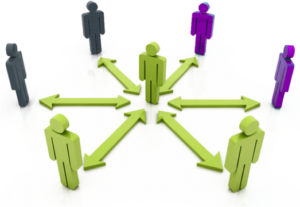Tips for Crowdfunding Ambassadors

Congratulations on being recruited as a crowdfunding ambassador. You are about to embark on a journey that, on one hand, can be thankless and tedious, but on the other, can be endlessly rewarding. In order to make your time as a Crowdfunding Ambassador the worthwhile experience that it should be, here are a few things to remember:
Embrace it!
First and foremost, a crowdfunding campaign is an opportunity for you to sing your organization’s praises from the rooftops. Are you proud of your organization’s mission, vision and accomplishments? Do you believe in the importance and significance of its work? Well here’s your chance to brag on your connection to the organization. Embrace it in the same way that other social media maestros embrace the chance to share pictures of their children, pets, dinners, and vacations.
Ask not what your campaign can do for you, but what you can do for your campaign.
Social media is a great vehicle for reaching large groups of people quickly. But YOU have to do the work. Simply posting on your page isn’t enough to guarantee that people will see your campaign, read it, or follow the call to action. That’s where you come in. Use personal emails, private messages, tags, phone calls or even text messages, to make sure that the campaign gets the attention that it needs and deserves.
Let the campaign do the ask.
Your Campaign Coordinator has already crafted powerful messaging for the campaign. The theme and stories are compelling, the content is rock solid, the case for support is air tight, and the call to action is crystal clear. Your job as an Ambassador is not to restate the campaign language, but to “make sure that you read this, in the hopes that you will make a donation and help us spread the word.”
Make a list and check it twice…
When creating your list, start with everyone in your rolodex. Scratch off the people who, for some reason or other, should not receive your campaign (say, for professional, conflict of interest reasons). Next, highlight those contacts who: (1) you think will give; (2) are active on social media, and/or (3) have strong connections to an audience of potential donors. These are the people to prioritize for direct outreach. Be sure to note the method(s) that you will use to reach them (email, phone call, Facebook, etc.) As for the rest of the names on your list, you can get to them with direct outreach if you have time, but they should still be included in the campaign even if you don’t.
…and find out who’s naughty or nice.
With the help of your Campaign Coordinator, who will keep you apprised of donations, click-throughs, unsubscribes, and other metrics, you will track the responses of your contacts throughout the campaign and follow up according to how “naughty” or “nice” they have been.
Give and get.
As in, give time and get results. Depending on the size of your list, it could take from 30 minutes to several hours to do your outreach, and you’ll need to do it every week for the duration of the campaign. Don’t leave productivity to chance, boredom, or lulls in your busy schedule. Designate a specific time for outreach; preferably one that is coordinated with the campaign schedule. For example, if the e-blasts/posts are going out on Tuesday, your follow up should be completed by the end of the week.
Give thanks.
It is your responsibility to directly and personally thank all of your donors within one week of their contribution to the campaign. The thank you can come in the form of an email, handwritten note, phone call, or text message, but a public “thank you” can help to promote the campaign. So, if possible and appropriate, acknowledge your donors in a tag/post on social media.
Don’t worry, be happy.
There’s no losing in a properly executed campaign. You get to reach out to people who you maybe haven’t heard from in a while to send well wishes, check in, or just say hi. If you and the rest of the team is doing your job, awareness of the organization and its cause will certainly be raised. As for the monetary goal, don’t fret – it’s the Campaign Coordinator’s job to worry about that. Focus on the process, and the results will take care of themselves.
